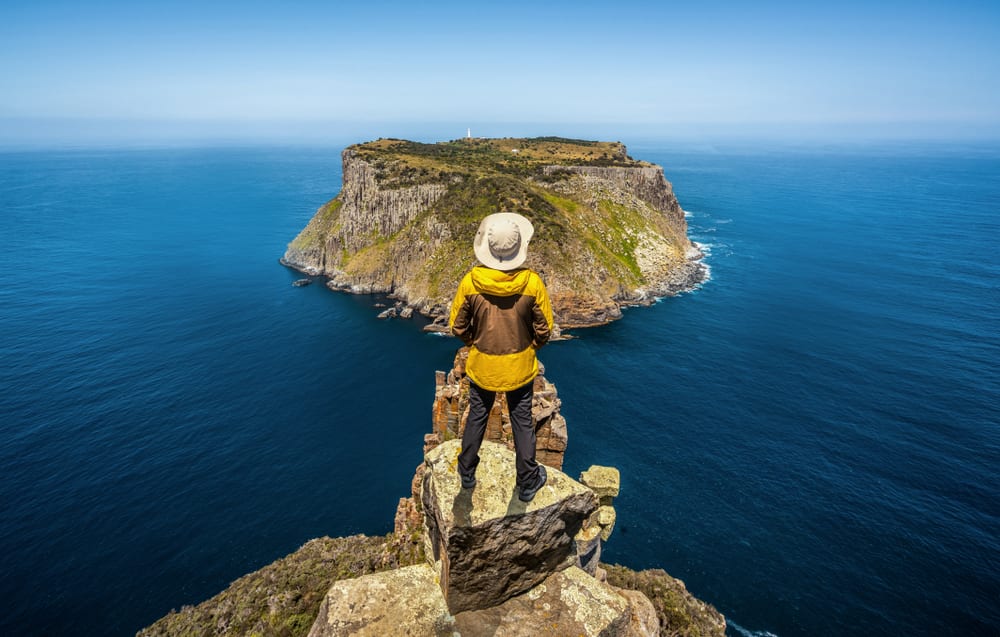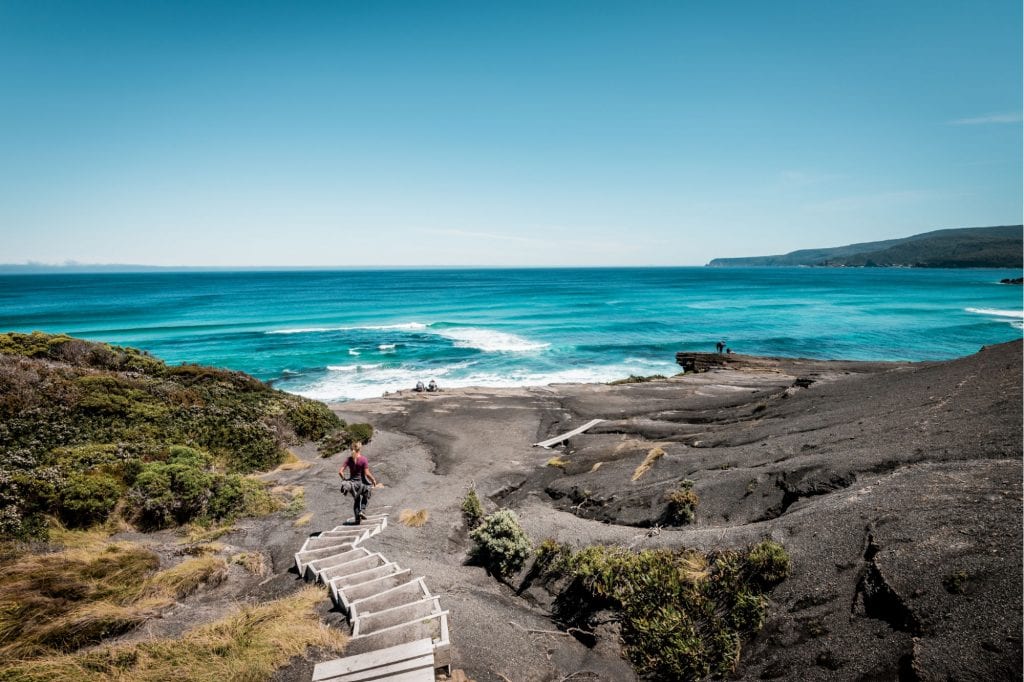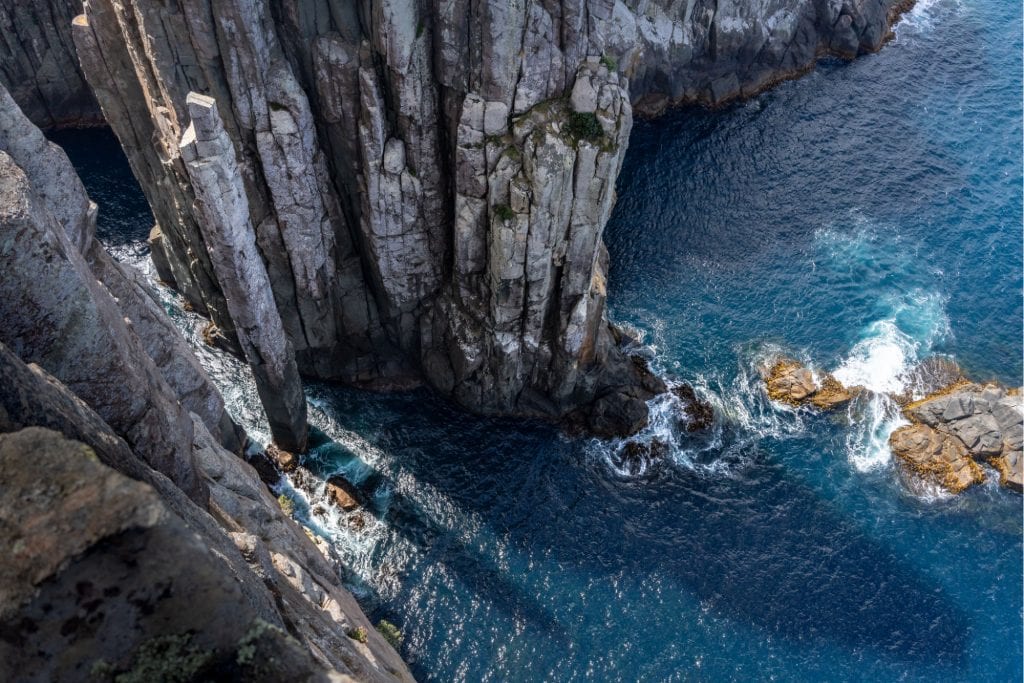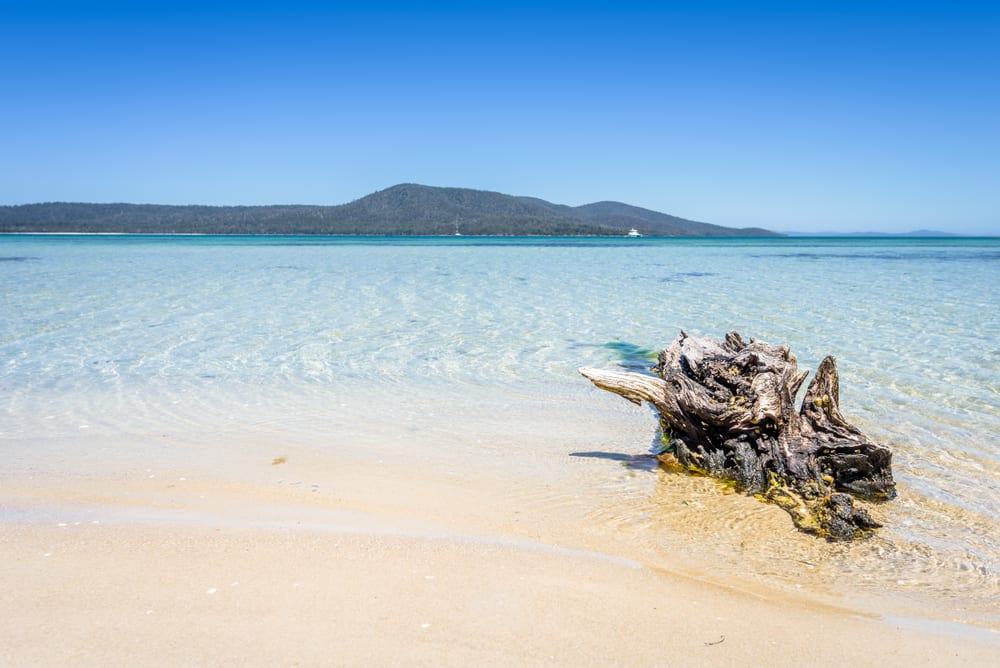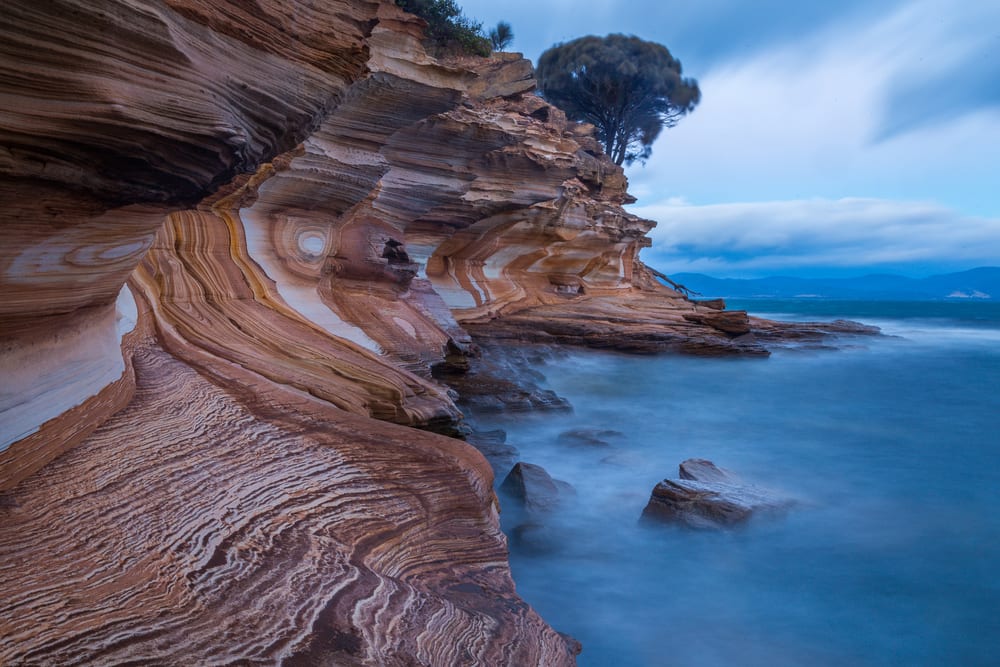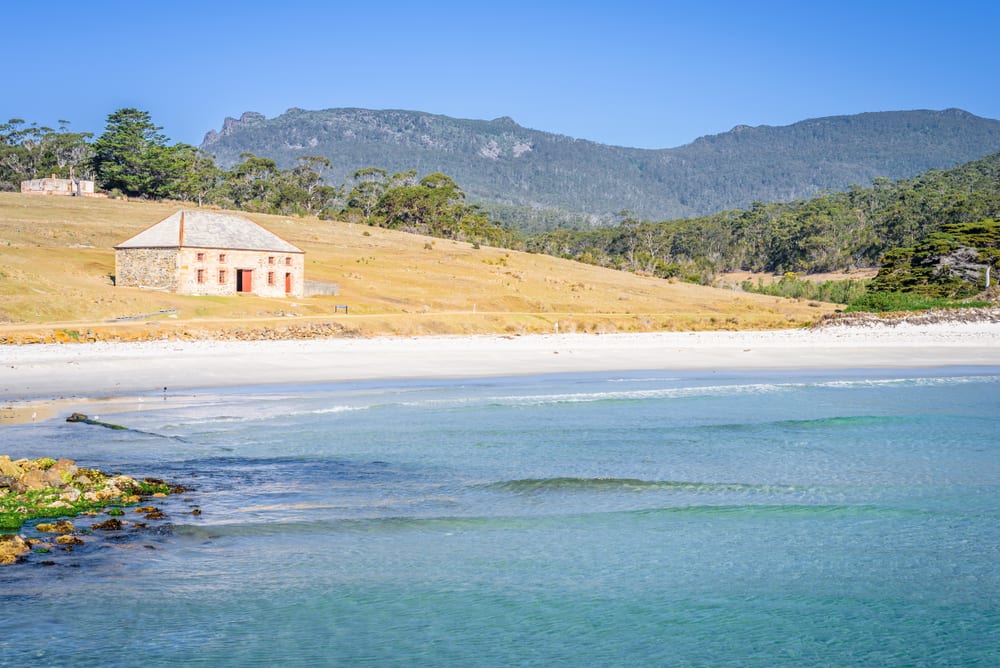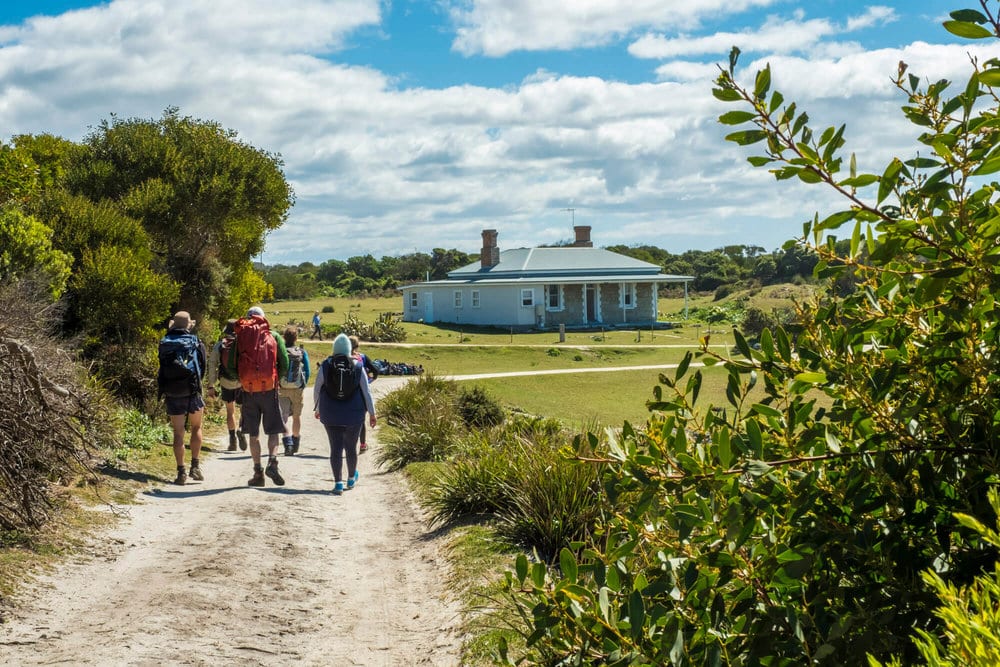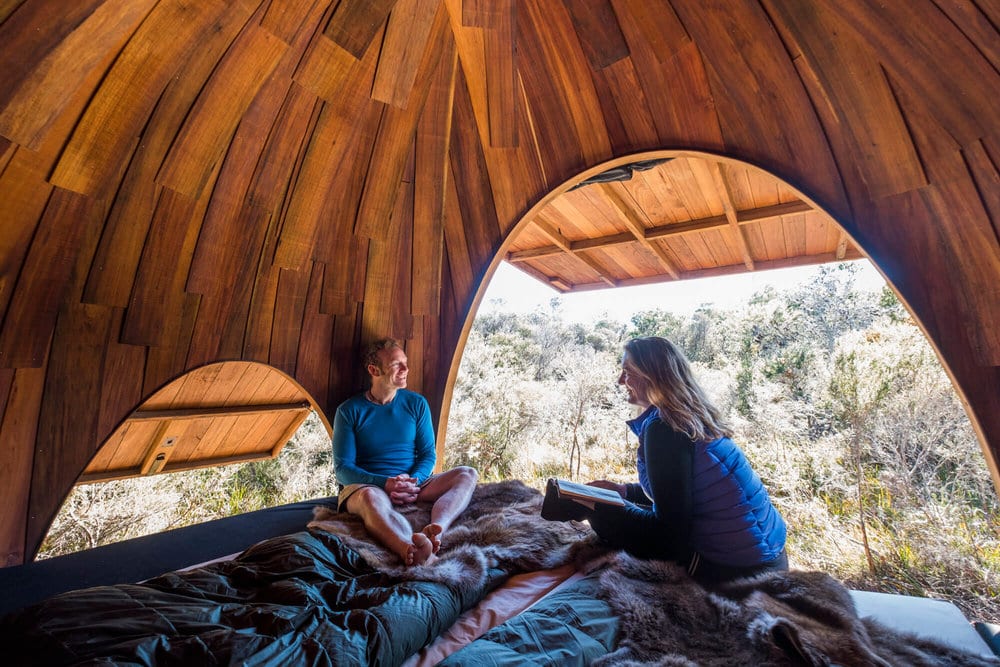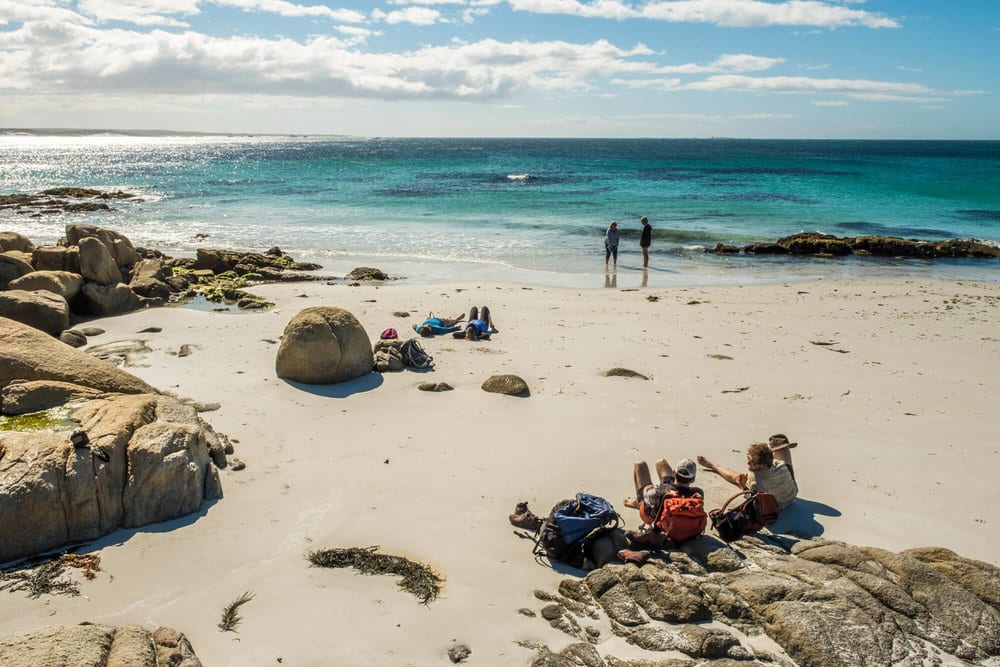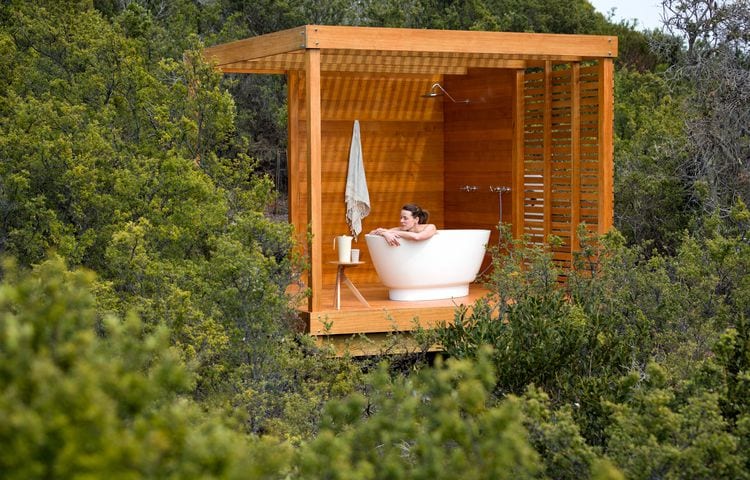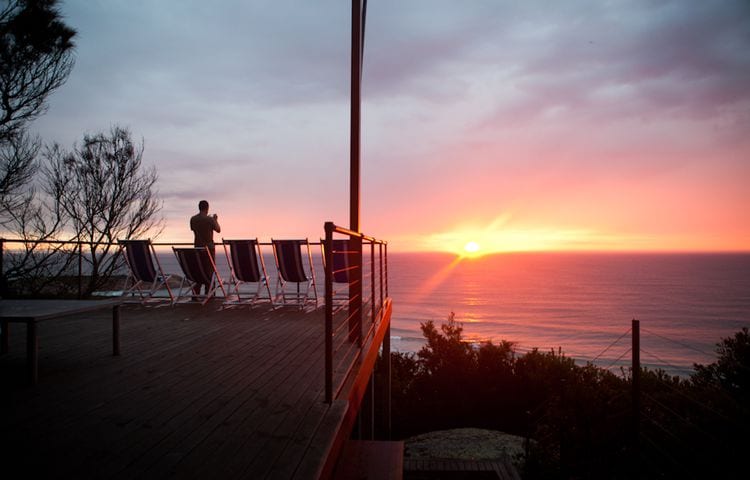Tasmania has long been Australia’s bushwalking state of choice.
Home to the country’s most famous hike, the Overland Track, and the most extensive suite of luxury guided walks, it’s a state in which wilderness rules – the Tasmanian Wilderness World Heritage Area alone covers 20 percent of the island.
Suitably, Tasmania is laced with superb walks. Be it a simple stroll or an epic trek, the island state is a walking destination par excellence.
Best one-day hikes
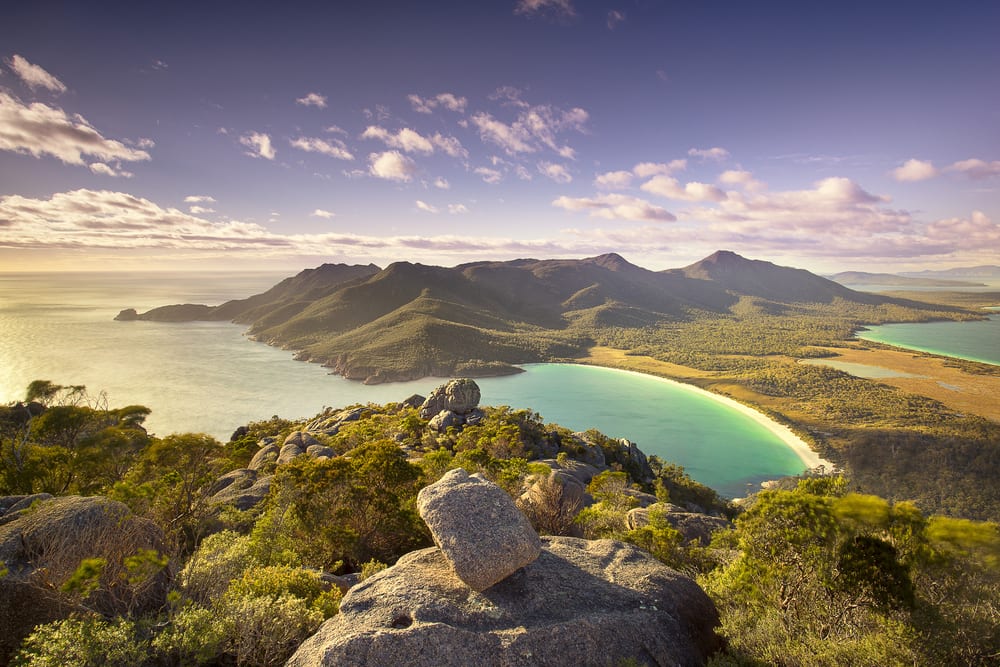
One of Tasmania’s most instantly recognisable scenes is Wineglass Bay, but the finest view of this stunning Freycinet Peninsula beach doesn’t come from the popular lookout. It comes instead from the peak above it: Mt Amos.
It’s a short, steep and exhilarating ascent through bare granite slabs to the boulder-strewn summit. From here, the long white stripe of Wineglass Bay is laid out 454 metres below, along with almost the entirety of Freycinet Peninsula – it’s arguably the finest coastal view in Tasmania.
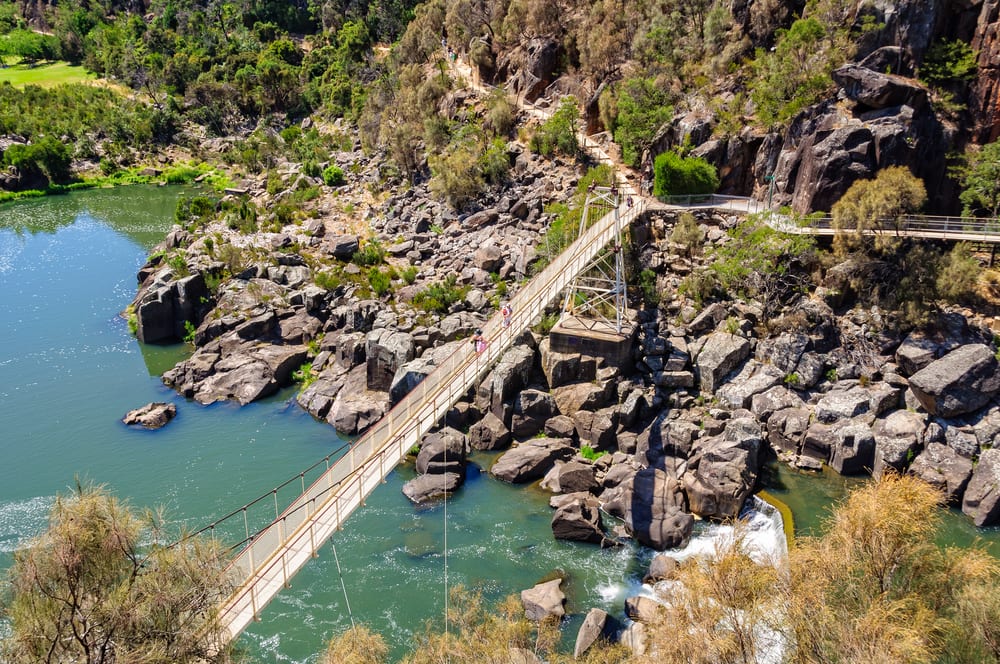
Tasmania’s second city, Launceston, is blessed with a natural treasure equalled by few other cities. Slicing through hills beside the city centre, rugged Cataract Gorge is lined with trails. A six-kilometre return walk below the gorge’s cliffs follows the South Esk River to the former Duck Reach power station, built at the end of the 19th century as one of the world’s first hydroelectric stations.
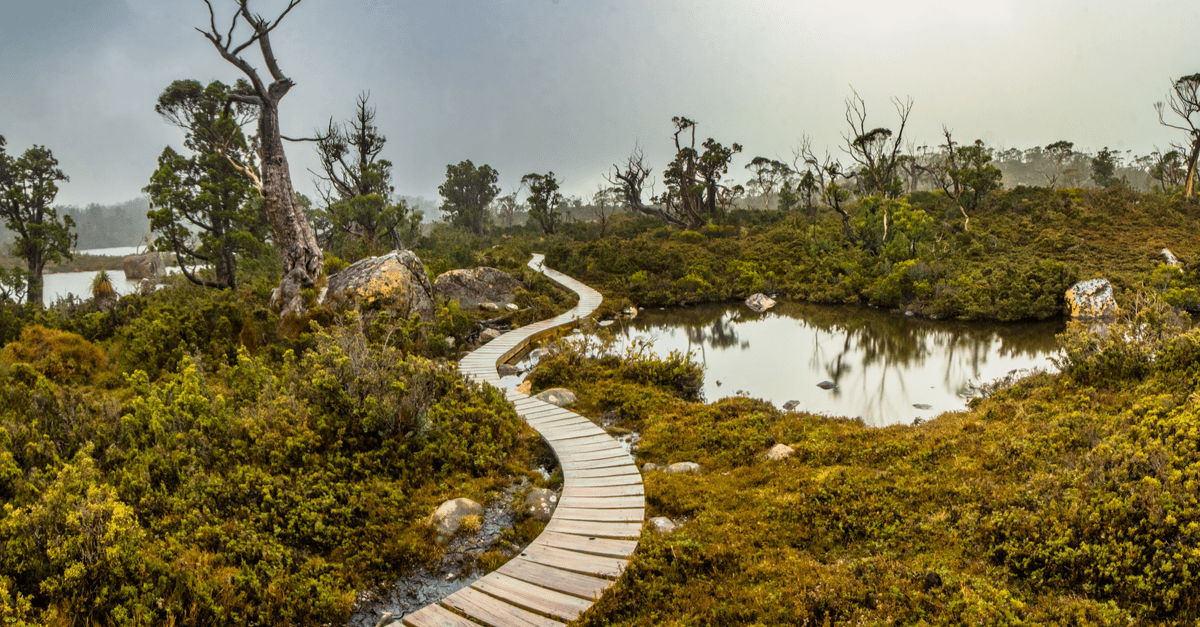
Close to Hobart, a beautiful 12-kilometre mountain trail loops through a chain of high lakes in Mt Field National Park. Known as the Tarn Shelf, the lakes sit pooled along a flat bench of land high in the mountains, mixing gentle lake scenes with dramatic alpine views. In autumn, the Tarn Shelf produces Tasmania’s most colourful natural show, with the fagus trees – one of Australia’s only native deciduous trees – around the lakes turning on a golden display. Autumn visits here are almost a pilgrimage for locals.
Best multi-day self-sufficient hikes
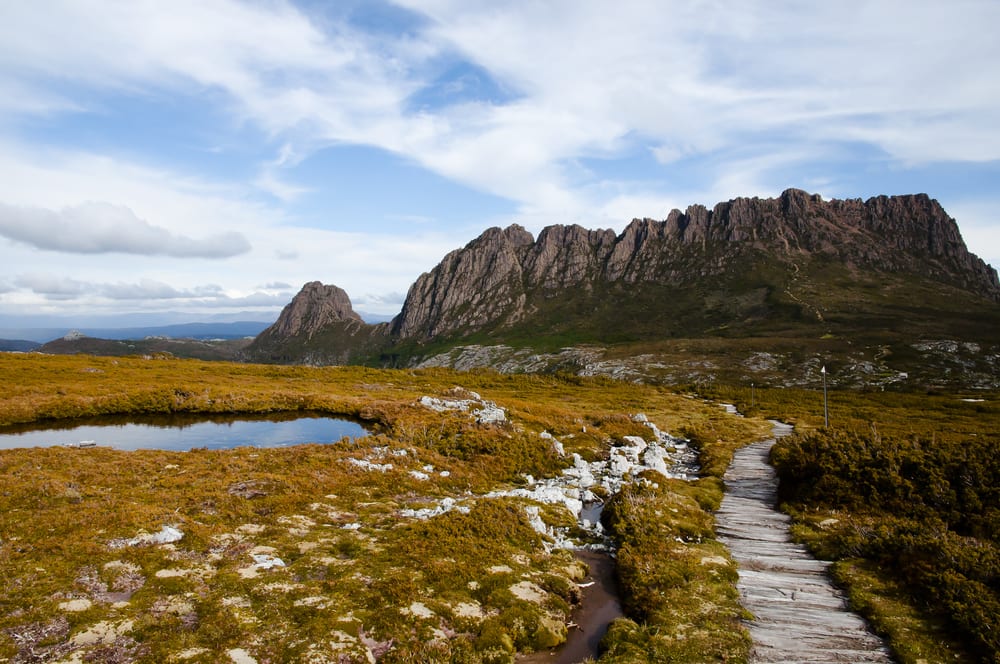
Tasmania comes into its own as a multi-day hiking destination, headed by a walk that regularly gets rated among the world’s best. The Overland Track threads between Tasmania’s highest mountains as it makes its 65-kilometre traverse from Cradle Mountain to Lake St Clair, Australia’s deepest lake.
The track has the good sense to make few significant climbs – the toughest moment comes at the beginning, on the climb to Marions Lookout above Dove Lake – but if high views beckon, it’s stitched with side trails onto the mountains that frame the track. A string of public huts break the track into a perfect six-day outing among some of Australia’s most beautiful mountain country.
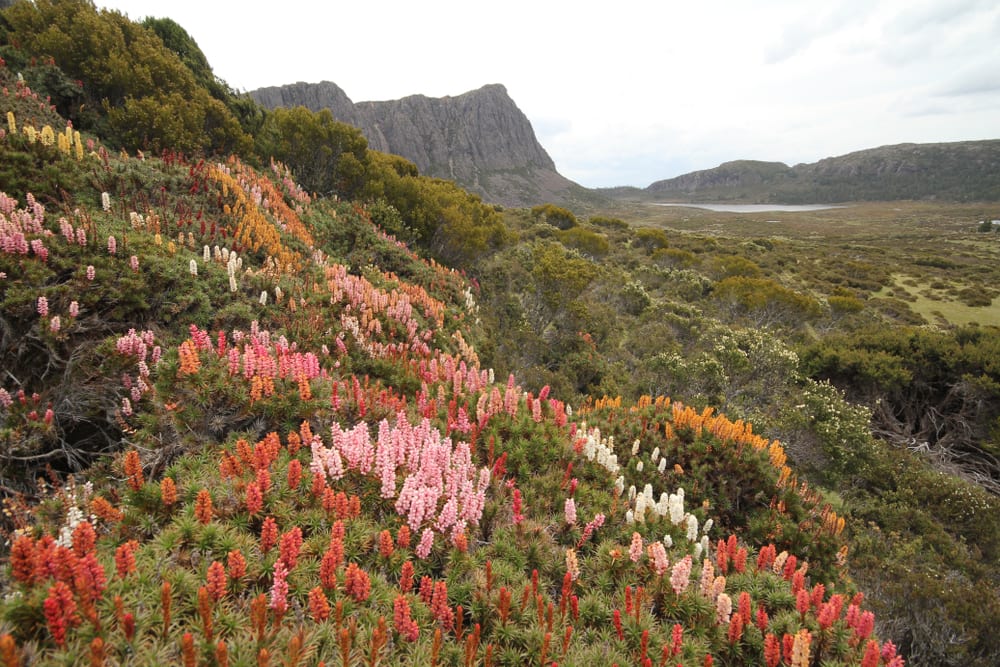
Less heralded than the Overland Track, but just as spectacular, are the neighbouring mountains that go by the biblical title of the Walls of Jerusalem. This stark and compact enclosure of peaks is best explored over about three days, camping just outside the Walls at Wild Dog Creek.
You can use this campsite as a base camp, exploring each day inside the Walls – a place of beautiful tarns and pencil pine forests – and climbing its various peaks without the full load of a pack. You can also make a more remote circuit by turning south out of the Walls and looping past Lake Ball and Lake Adelaide – allow three or four days for the circuit.
- South Cape Bay, Tasmania. Photo credit: Tom Jastram/Shutterstock
- Totem Pole, South Coast. Photo: Shutterstock/Mandy Creighton
As the name on the tin suggests, the 85-kilometre South Coast Track adheres to Australia’s southernmost coast. It’s a wild stretch of coastline – the next stop south is Antarctica – creating a weeklong walk that’s strangely more challenging than many of Tasmania’s mountain hikes.
The walk connects remote Melaleuca, accessible only by foot or light aircraft, to the state’s southern road end at Cockle Creek, and sews together nine beaches for wonderful sandy stretches of walking.
It’s perhaps most memorable for the notorious Ironbound Range, a steep mountain smothered in rainforest, deep mud and slippery tree roots that demands gymnastic hiking moves. It’s regarded as one of the toughest days of walking in Tasmania – you’ll have earned your sleep at the suitably named Deadmans Bay at the bottom.
Best guided hikes
Guided hikes operate along most of Tasmania’s major trails, but a couple have carved their own way into areas and cultures that weren’t previously on bushwalking agendas.
- Maria Island. Photo: Shutterstock/Tom Jastram
- Maria Island. Photo: Shutterstock/Sander Groffen
- Maria Island. Photo: Shutterstock/Tom Jastram
The Maria Island Walk is a four-day guided hike that covers the length of the namesake island off Tasmania’s east coast. The stunning national-park island has bone-white beaches, 700-metre-high mountains to climb, copious convict history and one of Australia’s most prolific concentrations of wildlife – your walking companions here will be wombats, wallabies, Cape Barren geese and even Tasmanian devils.
- wukalina walk, Tasmania. Photo credit: wukalina walk
- wukalina walk, Tasmania. Photo credit: wukalina walk
- wukalina walk, Tasmania. Photo credit: wukalina walk
Further north, the Bay of Fires is a place of extraordinary beauty – clear seas, white beaches, granite headlands smothered in orange lichen – but beneath the fancy makeup it’s also a place of major significance to the Tasmanian palawa (Aboriginal) people.
The wukalina walk is the first tourism venture from the palawa community, and leads walkers for four days along the Bay of Fires coastline, revealing middens, old shelter sites and Tasmanian bush tucker. Two of the three nights are spent in architect-designed pods shaped to resemble shelters traditionally used by palawa.
Best luxe hikes
Bush luxuries are virtually the norm across Tasmania’s selection of guided walks, with most featuring private, well-stocked huts or camps that allow you to carry little each day and fuel you with fine Tasmanian produce, wine and beer.

The Three Capes Lodge Walk is the newest of the luxe offerings, leading walkers along the 48-kilometre, four-day Three Capes Track around the highest sea cliffs in Australia. The Lodge Walk’s two private and plush lodges sit removed from the track’s public huts, and contain a hiker’s dream feature – a ‘relaxation pavilion’ offering a range of massages.
- Bay of Fires Walk. Photo credit: Tasmanian Walking Company
- Bay of Fires Walk. Photo credit: Tasmanian Walking Company
In similar style is the four-day Bay of Fires Lodge Walk, which strolls the postcard beaches of the Bay of Fires, staying one night in a private camp and the other two in the walk’s lodge, which is the only building along a 20-kilometre stretch of the coast. The views are multi-million-dollar and, like the Three Capes Lodge Walk, there’s a spa service on site for smoothing out those inevitable walking knots.
